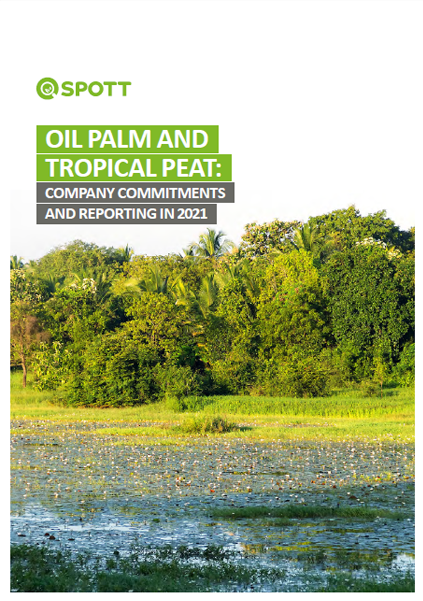Tropical peatland areas are rich ecosystems crucial for biodiversity, and which deliver a range of vital regulating, provisioning, and supporting ecosystem services. The destruction and degradation of tropical peatland in Southeast Asia, Africa and Central and South America for oil palm cultivation has serious negative impacts on people and nature, as well as posing a business risk for companies in the supply chain and their financiers. This report provides an overview of ZSL’s 2021 SPOTT assessments of sustainability reporting by palm oil producers, processors and traders.
Peatland is found around the world, with tropical peatland underlying parts of the major rainforests of Southeast Asia, the Congo Basin, and the Amazon, as well as areas of Central America and the Caribbean. Peatland and wetlands are critical for preventing and mitigating the effects of climate change and preserving biodiversity.
A major threat to peatland is drainage for agriculture, including oil palm, and forestry, including industrial pulp plantations. Although tropical peat is not ideally suited for oil palm cultivation – due to its high water content and acidic pH – as demand for land has increased over the last few decades, and areas with optimal soil types have become increasingly scarce, pressure to convert these areas has continued to grow. It is predicted that the majority of smallholder oil palm expansion will happen on peat soils by 2030, as cultivators look for more marginal landscapes to convert in response to a growing demand for palm oil and other commodities.
Degradation and loss of peatland leads to declines in biodiversity, and puts threatened species at risk, with 45% of mammals and 33% of bird species in tropical peat swamp forests listed as threatened.
Given the critical environmental and social impacts associated with peat destruction, it is crucial that palm oil companies work to minimise the risks to peat on and around their plantations or those of their suppliers. The report provides a set of recommendations for palm oil producers, downstream buyers, banks and investors.

